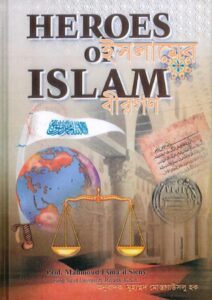
Abdul Bayes
18th. July 2012 The Financial Express
Mahabub Hossain, an eminent economist of the country, provides a succinct summary of the resource base of the country which can, at times, be paraphrased and presented before the readers. Land, the most important natural resource for production, is extremely scarce in Bangladesh and is very intensively used. The total land area of the country is estimated at 14.7 million hectares of which nearly 60 per cent is arable. The cultivable land was almost exhausted in the 1960s. Under pressure of population, there was some expansion of cultivated land in the 1960s and 1970s, mostly through deforestation and expansion of habitation in chars and reclaimed lands in remote islands. But in the 1970s a kind of equilibrium had been reached in the pattern of land use which has changed little since then.
Since 1980s Bangladesh has been facing increasing incidence of landlessness and shrinking of cultivable land. The excessive pressure of the growing population over the limited land resources has exacerbated the situation. According to the Agricultural Census taken in 1996, the number of rural households enumerated was 17.8 million; 10 per cent of them did not own any land at all, and roughly 60 per cent owned less than 0.2 hectares. This group is called “functionally landless”, as the meager amount of land they own cannot be a significant source of livelihood. A nationally representative sample survey conducted in 2008 estimated the number of households which do not own any land at four per cent, households without any cultivated land at 29 per cent, and households with less than 0.2 hectares at 59 per cent.
In addition to population pressure, the attack on the limited land base has come in the from of acquisition of land for the government development projects – often more than needed – demand for land for housing and industrial and commercial establishments, and erosion of river banks. The 1996 Agricultural Census reported that the land area operated by households declined from 9.2 million ha in 1983-84 to 8.2 million hectares in 1996. It means that Bangladesh had been losing about 83,000 hectares of cultivable land every year (one per cent of cultivable land) on account of increased urban areas, habitation and development of infrastructure. The recently concluded Agricultural Census taken in 2008 at 8.18 million hectares, which indicated that erosion of cultivable land has either been halted and/or additional cultivable land has been reclaimed from silted water bodies and new land accredited in the coastal belt.
Bangladesh has abundant water resources which attracted people to migrate to this region centuries ago and turned it into the most densely settled region in the world. The availability of surface water has however declined due to withdrawal of water from the rivers in upstream in India through barrages and dams from increased navigation of tributaries in India and to support agricultural growth. This has become a major issue of dispute and a stumbling-block in the way of improving relationship with India. Heavy rainfall and a suitable geological structure provide abundant supply of ground water which is available at a depth of about 12 meters in most regions, and at less than six meters in many parts of the country. But withdrawal of the ground water for irrigation beyond the capacity of recharge has gradually depleted this resource and has reached an alarming level for environmental concern of desertification and negative effect on the supply of safe drinking water.
Land is not of uniform quality and elevation. The overall picture of gently sloping alluvial plain disguises considerable variation of local relief which affects cropping patterns, the intensity of land use and crop yields. Complex local differences in elevation have important implications for the planning of drainage and irrigation as they are associated with differences in soil permeability and crop suitability. The National Water Plan prepared in the 1980s classifies land into four major types according to flood depth. The high land areas which are flooded upto a maximum of 30 cm during the peak of the monsoon season constitute about 30 per cent of the total land. With the development of irrigation facilities, two rice crops of high yielding varieties can be grown in such land and in between rice a shorter maturity on non-rice crops can be grown. The medium-high land, flooded between 30 to 90 cm during peak monsoon months, constitute another third of total land. About one-sixth of the total land is flooded in the range of 90 to 180 cm, which is suitable for one crop of low-yielding deep water monsoon rice (aman). The remaining one-sixth of the area consists of extremely low land that does not permit growing of any crop during the monsoon season. This area is suitable for growing one rice crop (boro) during the dry winter season.
The land types by flooding depth have however been changing due to filling up of beds of rivers, creeks and canals through siltation and bringing such land into cultivation. Changes may also have occurred from blockage of drainage through construction of roads, and protection of land from flooding through construction of flood protection embankments along river banks. The changes in land type by flooding depth as reported by Agricultural Censuses conducted by the Bangladesh Bureau of Statistics can be noted. Both the high land and low land areas have declined and medium land areas have increased from 44 per cent of the net cropped area in 1983-84 to 58 per cent in 2008. The change in land type has favourable impact on the intensity of land use. The single cropped area has declined from 32 to 25 per cent while the triple cropped area has increased from 11 to 15 per cent since the early 1980s..
Agricultural activities centring around crop cultivation which accounts for about 56 per cent of agricultural value addition, has declined from two-thirds in the 1970s. Another 14 per cent of the value addition originates in livestock and poultry farming, which are activities supplementary to crop husbandry, carried out by using homestead land and surplus family labour of farm workers and women. Fisheries and forestry which are relatively independent activities contribute respectively 22 and 8 per cent of the agricultural value addition. The fisheries sub-sector has increased its share substantially from about 15 per cent in the 1970s.
Abdul Bayes is Professor of Economcs at Jahangirnagar University. [email protected]









